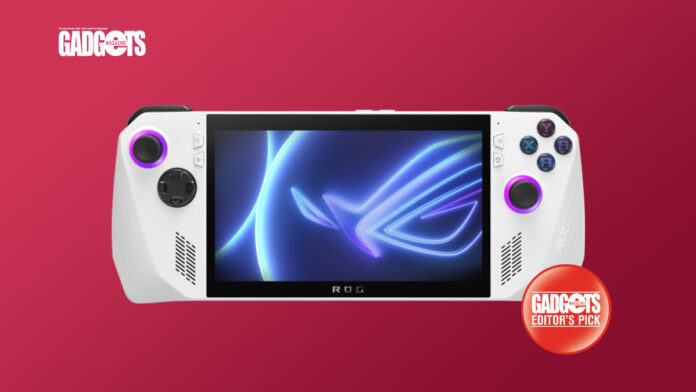It’s not a console. Thanks for reading the review, we’ll catch you next time!
Ok, there’s more to the ROG Ally than that, but for better or worse, that opener is exactly what it is. If you’re interested in the device, keep reading, and see if it’s the next device for you.
Design: 3.5/5
For a device that has me all worked up about what it can do, I’m not particularly excited about how it looks. Sure, there’s only so much you can do with a slab of plastic and glass, and I’m not really a fan of the “gaming” treatment on gaming hardware, but this strikes me as a little half-baked.
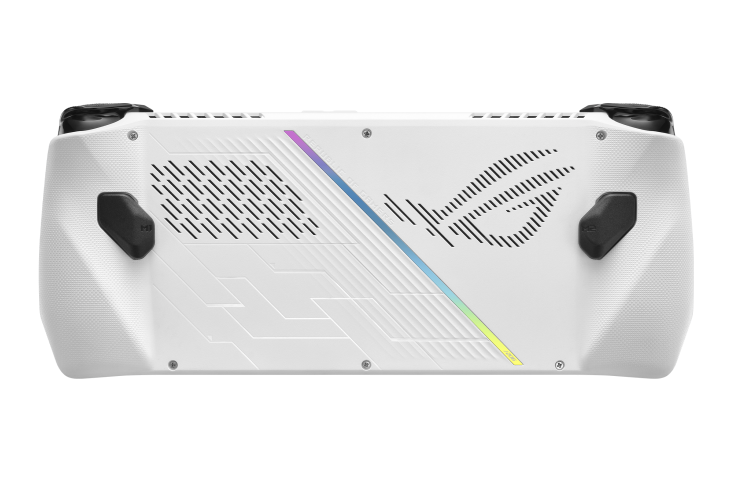
It’s done in plain white, with sticks and buttons on either side of the gloriously large screen, and I do appreciate the use of the cooling vents to show off the ROG design language, but it’s too busy to call understated, and too plain to call edgy.

There’s also the matter of the ports and buttons at the top, which I’ll get to more in the next section, but considering what it’s made to do, I feel like a little more thought could have been put into designing what is essentially a genre-defining device. A sub-700-gram PC gaming device? Yes, please!
Hardware: 4.5/5
If you hadn’t been compelled to at least acknowledge what AMD has been doing for the computing market in recent years, it’s time to start. The ROG Ally packs the Ryzen R1 Extreme processor. There’s no need to go into the details of the Z1E, but it’s a firecracker of a processor, and is a great choice for the platform. This is accompanied by 16GB of RAM, 512GB of solid-state storage, and an absolutely gorgeous 7-inch, 120Hz, FreeSync display, and variable refresh rate to make the most of the screen.
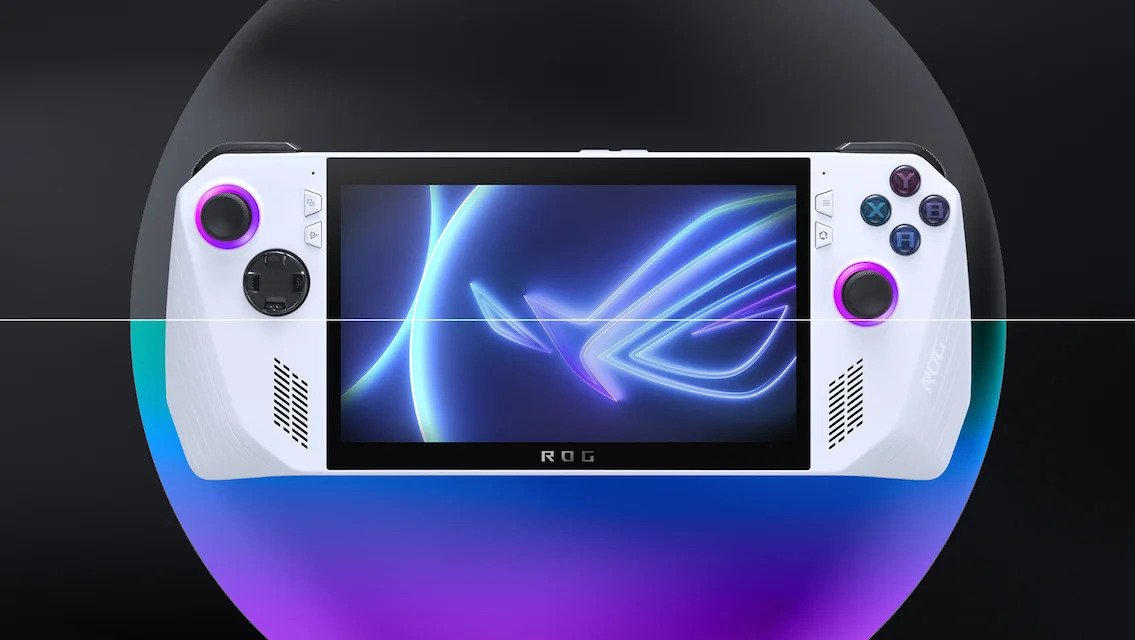
Audio is handled by two front-firing speakers, underneath the generously sized controls, and the power button even has a fingerprint scanner, for one-touch login. It even comes with a 3.5mm audio jack. Nice.
The device has a 40WH battery, which is large, but battery size is relative, and in this case, I’d hesitate to call it anything more than “adequate.” Upgrading the 512GB SSD is quite simple, and Asus themselves gives you a guide, which is quite a refreshing change.
User Experience: 5/5
Before grabbing for the pitchforks and torches saying I’m some sort of ROG shill, let me say that as a gaming device, it’s a few blocks away from the neighborhood of perfection. HOWEVER, if you view this as more than just a dedicated portable gaming device, then you can really see the appeal.
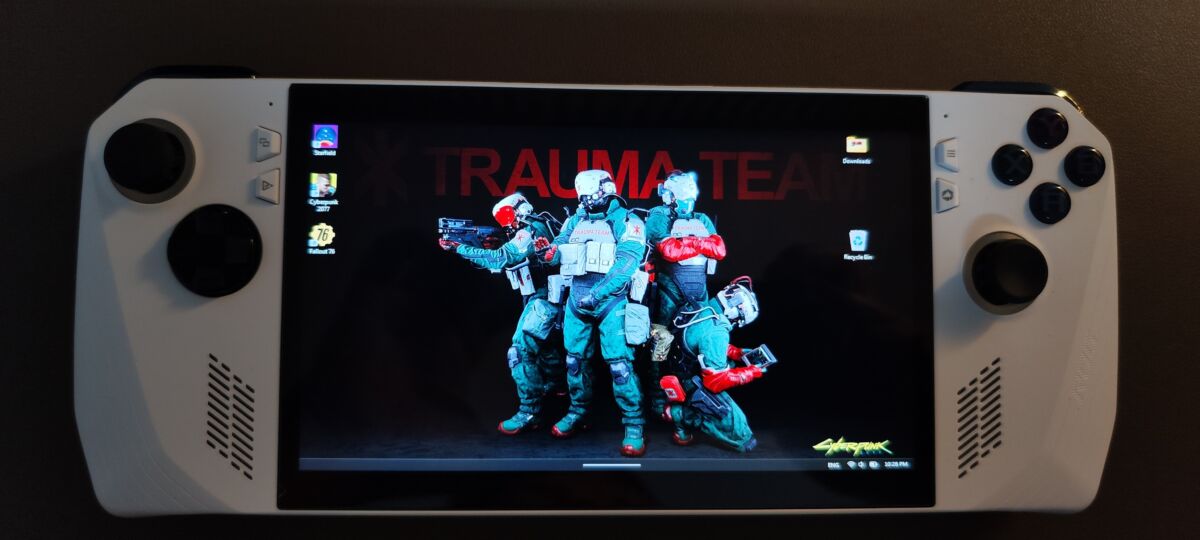
But before that, let’s go over some of the basic stuff. First: It’s a full Windows 11 device that does Windows 11 device things. There’s a desktop, a start button, and a taskbar, just like your laptop or desktop. Second: It’s not a console. The ROG Ally runs Windows, and has all the good and bad of the OS. Third: it has a hefty serving of what some might call bloatware, but since it’s such a niche, cutting-edge device, it’s probably better to leave all the extra software on there for now.
Before I start singing its praises — and trust me, I will — let me go over some of the points that give me a bit of an itch.
The placement of the USB-C port is annoying. Yes, it’s great that it’s at the top, and I understand the reason for it being beside the proprietary XG port, but because of how it’s laid out, it’s frustratingly difficult to plug the charger in without looking, and given that a lot of the time, I play in bed with the lights out, plugging in to charge while I sleep is more difficult than it should be.
The inclusion of a fingerprint scanner within the power button is great, so users don’t have to change their grip and tap at the screen to enter a password, but it’s almost perfectly flush with the top of the device, so it can be hard to feel for when trying to power the device on. Again, this is especially true in the dark. It feels like they spent a lot of time working on all the other parts of the device, that these little details got missed.
HOWEVER.
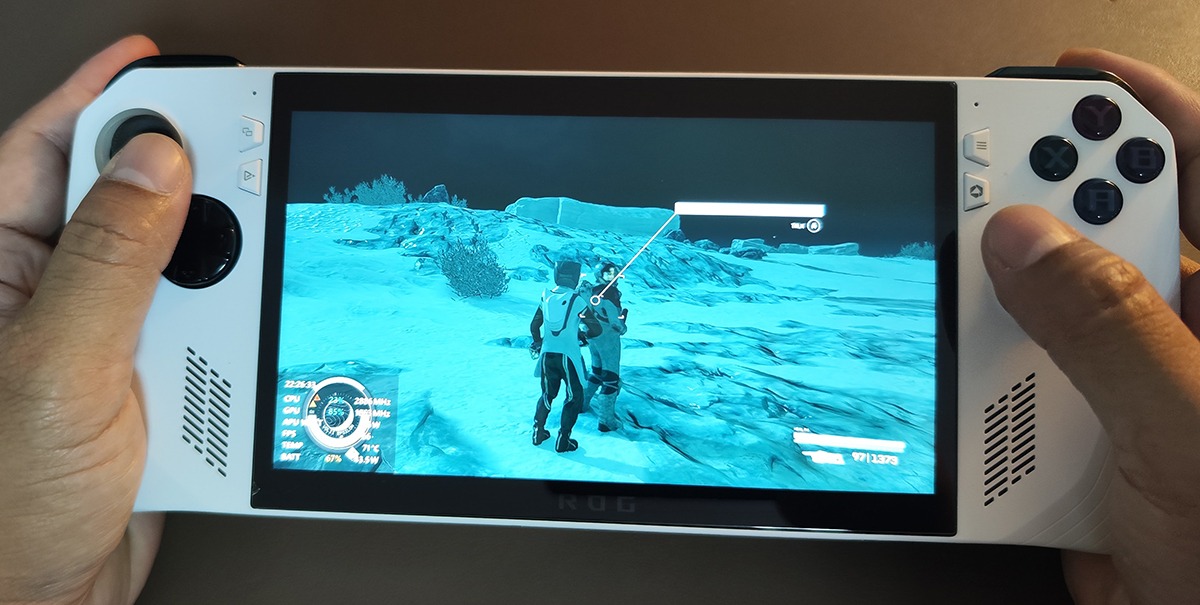
All of this is more than made up for by what the ROG Ally can do. I’m subscribed to Xbox Gamepass so I can, at my leisure, look through the library at all the games I don’t have time to play. Among those titles is Starfield. I have tweaked the settings enough to get impressive graphics while maintaining upwards of 30FPS on the most congested parts. Even when the framerate dips, there’s no tearing, thanks to VRR, so the dips aren’t even really noticeable. I mostly game on the 15W setting, at 720P, and I honestly enjoy every second of it.
Which is good, because you can’t really get very many of those seconds. I can manage a little over an hour of gameplay before the battery gives up. There’s really only so much power you can cram into a device this size, so I’m not really complaining, but if you’re looking for Switch-level play time, you’re going to be disappointed. Still, it’s an amazing experience while it lasts, thanks to responsive controls, that gorgeous screen, and the wow factor of being able to play these titles on such a small device, along with speakers that punch several divisions above their weight class.
There’s more to the RPG Ally than gaming, though. One of the things that really makes this device shine is the fact that it runs Windows 11. This gives you access to all the functionality of any other Windows 11 device. I have been writing this review at various tables, using an iPad as a display thanks to third-party apps, and a wireless mouse and keyboard. That in itself isn’t that big a feat, but once you realize it’s still a powerful gaming device on its own, and it’s replacing a heavy gaming laptop, then it starts to make sense. Keep a monitor, mouse, and keyboard at your desk, and the small footprint pops right into a small bag, ready to be pulled out for gaming whenever you can spare a moment. With an external display, you’ll get well over 4 hours of work between charges at lower wattages.
Value: 4.5/5
At almost PHP45,000, the ROG Ally is several blocks removed from being called “cheap,” but considering what it can do in terms of gaming and productivity, it’s actually a pretty good deal. To be fair, it’s not for everyone. If you’re looking for a console-like fire-up-and-play experience that works without much work, this might not be for you. This is a device that will best serve enthusiasts, particularly given some of the quirks a first-generation device will necessarily have. If you’re willing to work for your portable gaming experience, this is your sign to jump in.




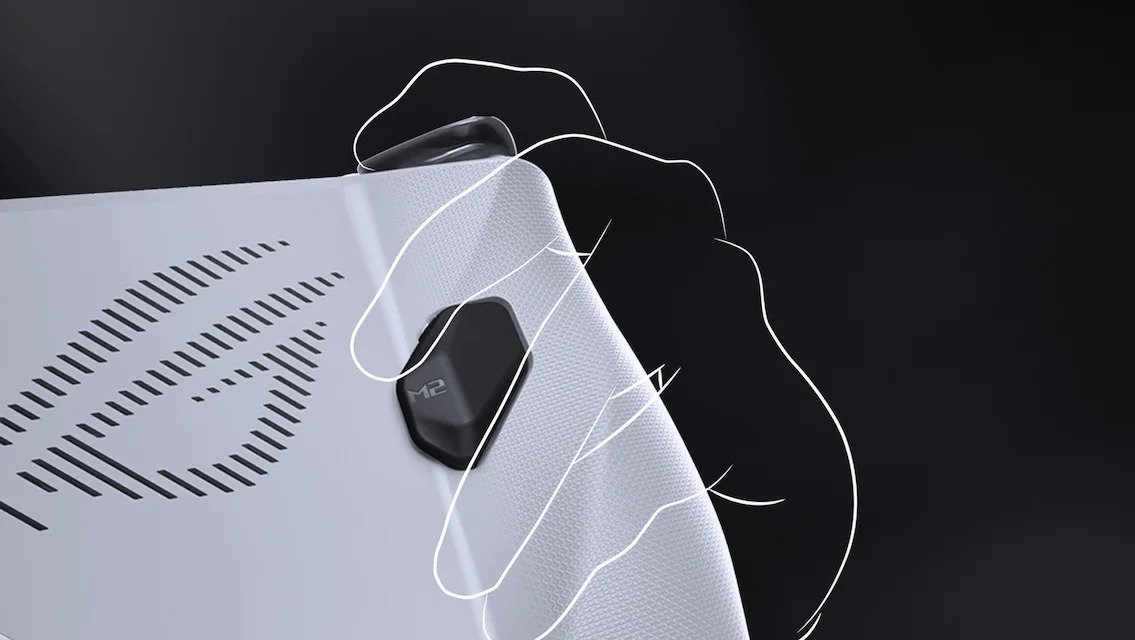
Specifications:
- Processor:
CPU: AMD Ryzen Z1 Extreme Processor (“Zen4” architecture with 4nm process, 8-core /16-threads, 24MB total cache, up to 5.10 Ghz boost) - GPU: AMD Radeon Graphics TDP: 9-30W
- Display: 7-inch, FHD (1920 x 1080) 16:9, Touch Screen,
- Refresh Rate: 120Hz
- Response Time: 7ms
- Brightness: 500 nits
- Memory: 16GB LPDDR5
- Storage: 512GB
What’s Hot:
- Can legitimately work AND play with the right extras
- AAA titles natively, on the go
- VRR really lets you enjoy the display
What’s Not:
- Rewards people who really want to push it to do more
- Battery life is short
- Not as easy to use as a gaming console.
Bottomline:
If you’re willing to put in some work, it’ll serve you really really well.
Reviewed by Ren Alcantara
Also published in GADGETS MAGAZINE September 2023 Issue
